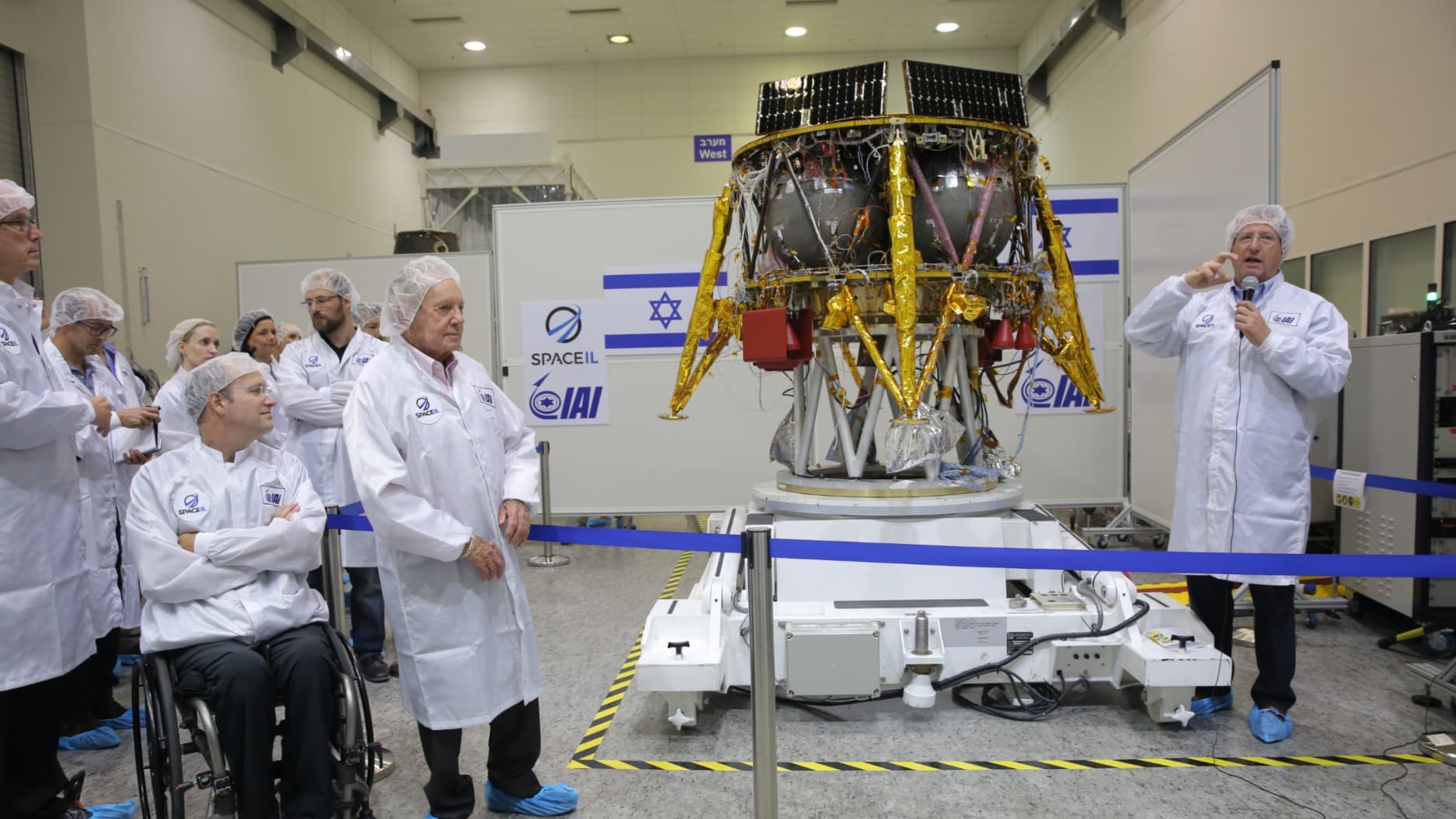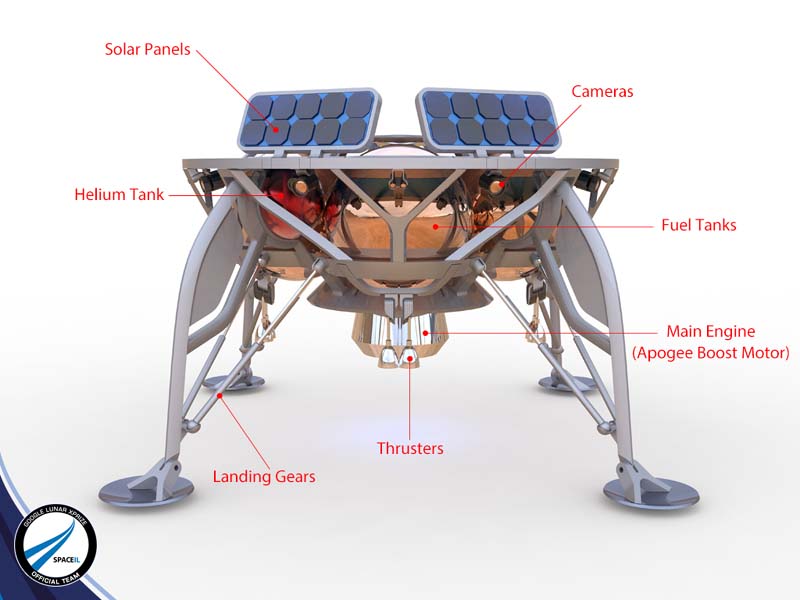The preliminary launch date of the SpaceIL lunar module has been announced.

Run to be!
On July 10, on the official site of SpaceIL, there was wonderful news. The project will live despite the expiration of the Lunar Google X Prize ( LGXP ) competition .
Moreover, the news announced the launch date and the expected module landing.
In the area of December 2018, SpaceX will launch it from Cape Canaveral, and after about 2 months in February of next year, it is expected to “fit”.
At the moment, on the official SpaceX website there is no information about the launch of the module in December, but it is written on Wikipedia that the launch will be made by the Falcon 9 B5 rocket (last modified) in a company with an unknown communication satellite.
In Israel, special excitement is not yet felt although, in principle, the children have heard about the mission. Namely, they are the target audience, since the main goal of the mission is presented as an educational one.
In the media, news is also sometimes voiced. For example, they recently wrote that if the mission is successful, then Israel will be the 4th country after the United States, the USSR and China who managed to successfully land a spacecraft on the moon. Let's face it, it is no longer about episodic launches of military satellites with the help of a converted "ballistics", but about joining the "adult" space club.
But this is of course if everything goes well, since there are more than enough obstacles to such a launch.
In short, the problems started already at the stage of financing the project, however, like most of the projects that participated in the Lunar Google X Prize. This moment was overcome with difficulty, as a consequence of the main condition - financing should be carried out 100% with private money. No government subsidies, etc.
At the moment, the program has already cost about 320 million shekels (~ 80 million dollars), and this is without the cost of the launch.
Therefore, SpaceIlL exists on the money of philanthropists and is carried out on a voluntary basis. Here (pdf) you can read more about the people who donated their money and time to the project.
As I wrote above, the project was conceived as educational. The main goal is to launch the so-called "Apollo effect", in other words, to create a public response and to awaken interest in the cosmos among the younger generation. For example, on an El-Al flight from Tel Aviv to Moscow, you can get a coloring book with the appropriate symbols.

The main mission of SpaceIL is to deliver the module to the moon and "jump" - switching on engines for a short time in order to overcome 500 meters. This maneuver is a prerequisite for winning the competition, along with a “selfie” and sending a photo to Earth. SpaceIL decided to save money and, instead of building an expensive lunar rover, it was decided that it would be better to cover this distance with a single jump - but it is more risky cheaper.

So, in order to make the mission more meaningful for public opinion, it was decided to add one more task to the mandatory task list - an optional task for victory, but very important for future astronauts and understanding of cosmic reality. Namely, a scientific experiment.
After executing the main program, the module will begin measuring the magnetic field around it and will transmit data to the Earth.
As is known, the Moon does not have an iron core rotating in a liquid mantle (it is thanks to this process that the magnetic field of the Earth owes its appearance). However, we know that in some places the magnetic field is present on the moon. This knowledge was gained as a result of NASA’s “ Lunar Prospector ” mission in 1999.
The origin of the local magnetic field on the moon is a mystery which is to be solved using the data from the SpaceIL module.
At the moment, 3 hypotheses are considered to explain the appearance of a field in some lunar rocks. The first is an ancient residual magnetic field, which has remained since the Moon was geologically active. The second is a field imported by stormy meteorites. The third - the magnetic field appeared as a result of the collision of the Moon with a large space object. Geological activity resulting from this collision generated a local magnetic field.
The experiment (LMAG) involves the implementation of measurements at 3 stages of the mission: during landing (periodic measurements from an altitude of 600 km), at the landing site and during the jump. In this way, the strength of the magnetic field, the delta changes, and the estimated source will be measured.
The experiment is conducted under the auspices of the Weizmann Institute and the University of California.
More information about the experiment in affordable English - here .
Of the 33 teams that started the competition, 5 were left - the American, the Israeli team, the international team, the Japanese team and the team from India. In any case, I would like to wish the guys a good moon landing and the completion of the mission.
Not so long ago, the cosmos was a privilege of the giant states. After the flight of "Apollo" and the intoxication of the cosmos, it was time when the attention of the world was focused on the collapse of the USSR, the wars and the change of the world order ...
Now, with the advent of the private sector in space, the situation is beginning to change slowly - it may well happen that many of those who are children today will urgently need knowledge related to external space. It may well be that people with such knowledge will need a lot in the near future. So it's time to prepare for this now.
